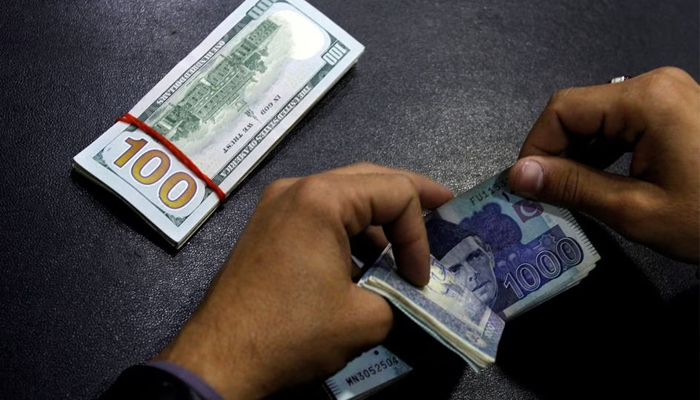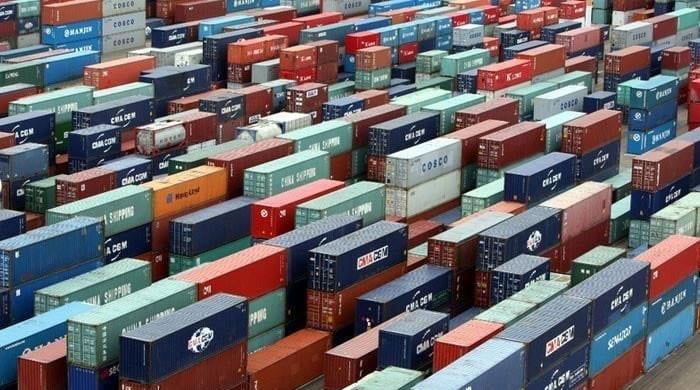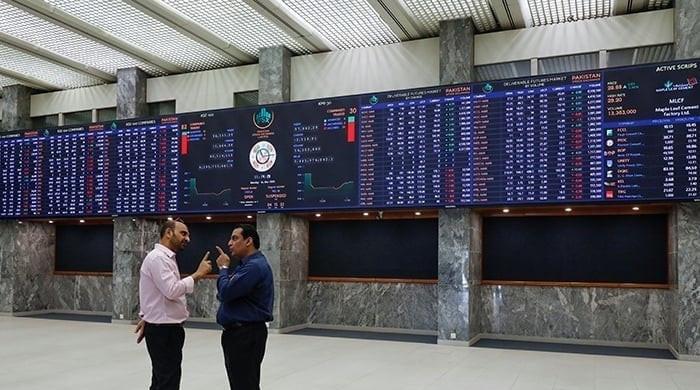PKR vs dollar: Rupee likely to maintain upward trend against greenback
In the five sessions, local currency increased against the dollar by 1.43% as demand for dollars dropped in unofficial market
September 17, 2023

- Currency increases by 1.43% or Rs4.31 against dollar.
- Demand for dollars in parallel or unofficial market drops.
- Tens of millions of dollars return into interbank, open markets.
KARACHI: As markets enjoy a surge in export earnings and remittance inflows after the government cracked down on speculative activity, the rupee is set to continue its upward trend against the US dollar, The News reported Sunday.
The rupee closed at 301.16/dollar on Monday, but gained strength and finished at 296.85 on Friday.
In the five sessions this week, the currency increased against the dollar by 1.43% or Rs4.31 as the demand for dollars in the parallel or unofficial market dropped.
According to Tresmark, a financial technology company, in a note on Saturday: "Liquidity has improved in the forex market as exporters were selling in ready as well as in forwards with good volumes and also due to uptick in daily remittances, and due to this rupee will continue to strengthen gradually."
The current account deficit, which measures the gap between foreign exchange inflows and outflows, narrowed by 79% month-on-month to $160 million in August, as a result of improvement across all four heads: trade, services, primary and secondary income.
The regulatory measures aimed at curbing illegal activities in the foreign exchange market have begun to yield results. This has helped in narrowing the gap between the interbank and open market exchange rates. Therefore, the remittances have started improving.
Since the start of the raids on black market operators on September 6, traders claim that tens of millions of dollars have come back into Pakistan's interbank and open markets.
The rupee, which hit a record low on September 5, surged more than 10% from levels seen before the crackdown, recovering to trade for less than $300/dollar last week.
However, the rupee also faced some pressure from the lifting of import restrictions, which increased the demand for foreign currency. In August, it lost value against the dollar by almost 6%.
"In last 30 years, rupee has depreciated by 7% a year on an average against US dollar," Topline Securities, a brokerage firm, said in a report.
"But the last 6 years were really bad in which rupee has fallen on an average by 15% a year," it added.
Tresmark said the SBP's decision to maintain the policy rate at 22% on Thursday can be interpreted as the nature of current economic ills is not demand-driven. There are supply-side issues, fiscal mismanagement and speculative trends.
Increasing rates would not impact demand (which is already low) and would not have unlocked supply as more hoarders, speculative buyers and people with black money are immune to higher rates as they usually keep in current accounts or in cash.
"Whereas the government expenses go up meteorically (being the largest borrower) and in a vicious cycle impact inflation," it said. "Interest rates are at their highest in Pakistan's history anyway, so taking administrative measures was really the more practical way out."
However, it also warned that the reversal in commodity prices is still slower than desired and that the border with Afghanistan is still porous and activities continue.
"So expect higher volumes of imports (which are required to smoothen supply) to keep a check on rupee parity. As a result, rates may not come down below 285/$ (July end levels) and should consolidate at the 290-295 levels," it said.











